This past Saturday I was invited to an event called #meetveggies at Monsanto’s vegetable seed division (Seminis) research facility and farm in Woodland, CA. Because I have a interest in biotechnology and plant-based agriculture I was jealous of The Pythagorean Crank for getting to see their operations in St. Louis so I immediately said yes.
It took about 7 hours and several buses to traverse the relatively short distance between Oakland and Woodland but shortly after 7am I was standing in front of the gates. I pulled out my phone and snapped a quick photo of the entrance before realizing that I might look kinda sketchy standing there in my hoodie taking photos of a such controversial company’s building.
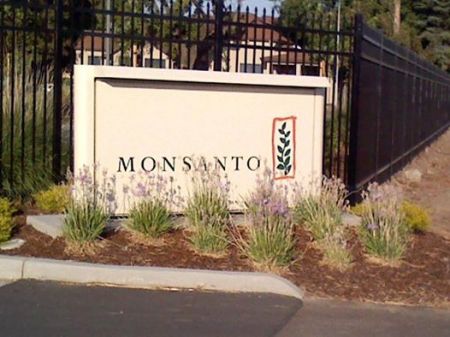
But not to worry, I quickly resolved the security guard’s curiosity and waited for everyone else to arrive.
Once everyone arrived we gathered in a boardroom for a short presentation by Tom Wofford, director of brassica and leafy breeding, about plant breeding and genetics.
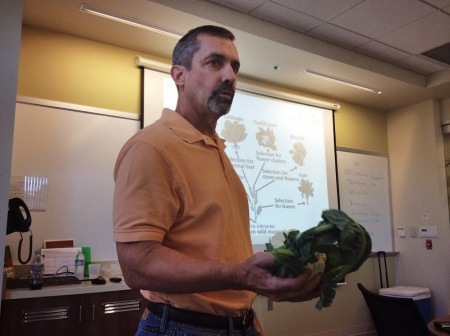
Here Tom explains how it took 20 years of breeding to achieve a white cauliflower that doesn’t yellow in the sun. This saves farmers the labor intensive process of wrapping the leaves over the head to shade it. After Tom’s presentation we headed out to the fields.
The first breeder we met in the fields was Bill Johnson who has spent 14 years breeding squash.
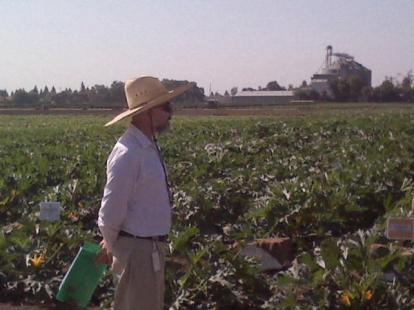
He showed us his various plots of squash, some of which were genetically engineered to be virus resistant. In fact these were the only genetically engineered crops we saw all day, Monsanto actually makes much more non-GMO seed than you might initially think.
Most of Bill’s work actually centers around non-gmo squash for global markets. He taught us about the great importance of cultural specifications like shape and color in his breeding work. In this video (not shot during my visit) Bill explains some of his work.
As the group moved on to the the next field I stay behind and talked with Bill, he was gracious enough to show me how he used twist ties on the flowers and hand pollination to control pollination with so many other varieties of squash all around.
I caught up with the group just as melon breeder Jeff Mills started talking about his work.
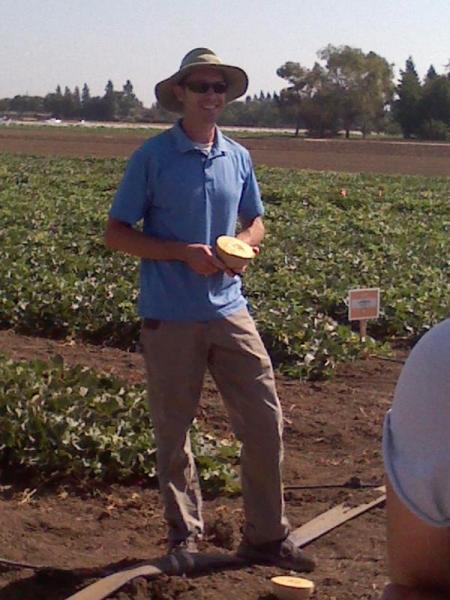
He taught us about how the cantaloupe, actually a misnomer, market is seasonally split between between Western shippers in the warmer months and Harpers in the cooler months and how to pick the perfectly ripe melon. With western shippers you wanna look for creamy skin behind the netting and a smooth round hole where the stem “slipped” off the melon. Harpers on the other hand will have green skin behind the netting when ripe but can be over ripe when the stem slips so look for one where cracks are just forming at the base. He also spoke about how vital marker assisted selection was to his work and the importance of traits like field holding.
As Jeff spoke he picked up melon after melon, slicing them in half and handing out samples. I tried so many varieties that I lost track but one of my favorites was the Amarillo melon. At the end of the day we were even given the chance to pick out a couple melons to take home.
Next up was Tomato breeder Alan Krivanek who showed us his amazing array of fresh market style tomatoes. Alan said that water use as well as consumer traits like flavor and texture were important in his work.
There were so many names I couldn’t keep track of the varieties, to be fair some had names that were just strings of letters and numbers, but one variety I do remember by name were the tiny, juicy Zima tomatoes. Normally I never eat raw tomatoes as a snack but I just couldnt help myself with the delicious samples Alan gave out. He also let me take home a brown type tomato.
Last but not least was watermelon breeder Greg Tolla who explained the variety in watermelons are largely due to cultural preferences, some places like seedless, other prefer seeded, so like a 15 pound melons, others want giant 30 pounders.
To pick a ripe watermelon Greg told us to look for the wilted tendril if you are in the field or to look for a yellow, not white, belly in the store. Greg also showed us a watermelon developed for the cut fruit industry with a firmer, more apple-like, texture the reduce bleeding. By that point in the hot, sunny day the many samples of Greg’s watermelons were a refreshing treat.
The day wrapped up at a Mexican restaurant where I was able to wrangle up a decent veggie burrito as well as try some yummy pineapple guacamole, paid for by my hosts, before I had to head home while the rest of the group checked out the Woodland Tomato Festival. That raises the question some of you are probably wondering, “How much did they pay you?”.
Honestly? $150 to cover transportation…not in cash, but in gift cards that were essentially cash. So that’s it, I’m bought and paid for. Well not so fast. Because it only cost me $20 in bus fare and I genuinely enjoyed the experience, I actually felt uncomfortable accepting the cards but I felt that rather than refuse them I could use them for a good cause. So I am donating the $150 to a local food bank. And in the interest of full disclosure in addition to my meal being paid for I also received a free hat, a water bottle, and snatched a couple granola bars from the snack table on my way out. Those I intend to keep.
I think one of the take-aways here is that there are a lot of narratives about Monsanto out there, not all of them based on fact. It is a helpful perspective to hear the plants breeders stories first hand. Monsanto isn’t a perfect company, and there are aspects of their business with which I have problems (I am in particular concerned about animal testing and field workers), but I’m not convinced they are the “MonSatan” or the “most evil company in the world” that they are commonly made out to be.
Another take-away is that we all really want the same things, safe and sustainable agriculture. We might disagree on exactly what that looks like. But the breeders I met were no evil henchmen, they were caring and passionate people who took pride in their work. If I could create squash that hardy, melons that sweet, tomatoes that flavorful, or watermelon that juicy, I would be proud too!
I personally had a great time and would highly recommend the experience to others.
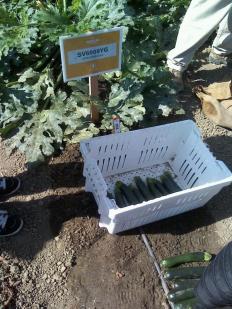
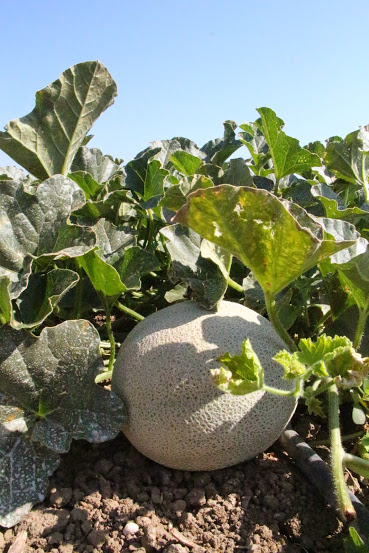
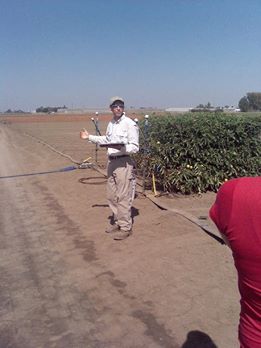

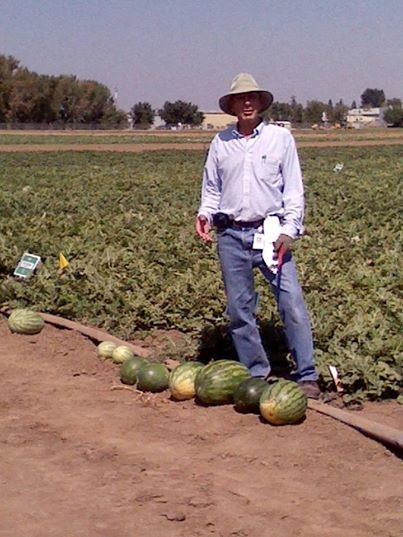
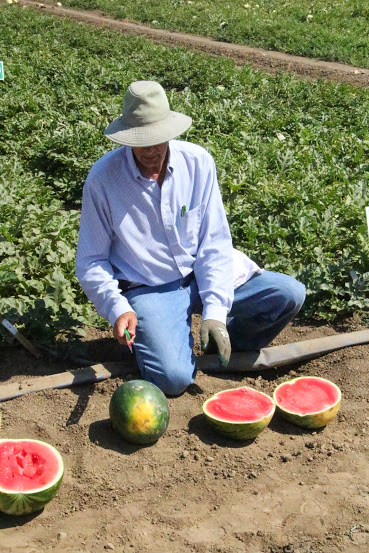

August 11, 2014 at 10:53 pm |
Glad you enjoyed the experience.
Wanted to ask you for a while: what’s your take on the bioaccumulation in our bodies of the residues of pesticides that the non-organic produce is sprayed with? Are you concerned? If yes, what do you do about it in your diet? Some say just wash it off with water; but others claim that most fruits/veggies are sprayed repeatedly so the pesticides get absorbed in the skin and flesh, or permeate the fruit via water that plants suck up from the soil. They call it ‘structural’ damage or pollution.
September 13, 2015 at 8:30 pm |
I’m much more worried about getting enough fruits and veggies in my diet than I am about pesticide residues. I rinse my produce but dont use any pesticide washes that I’ve seen sold at Whole Foods, ect.
August 11, 2014 at 11:02 pm |
Shill bucks huh? I’d suggest the payment for transportation didn’t even come close but I love you putting the money to good use with a food bank!
August 21, 2014 at 3:58 pm |
SHILL!!!!
August 21, 2014 at 8:02 pm |
Hope u r joking.
April 27, 2016 at 10:40 am |
Are you a shill? Who do you work for?
August 5, 2016 at 7:08 pm |
haha, no.